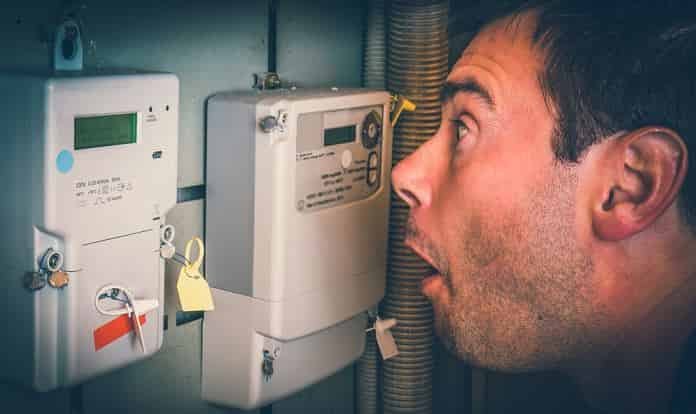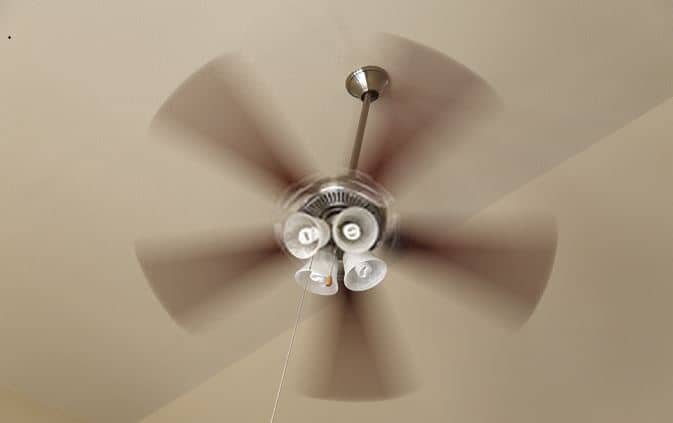
For those of us without access to an air conditioning system during the sweltering American summer, a ceiling fan is probably the next best thing. Although ceiling fans generally won’t be as effective as air conditioners in cooling, they are much more affordable to use. So how much does it cost to operate a ceiling fan? We have done some research and calculations to determine the actual cost of using a fan.
Also Read: Ceiling Fans Under $100
Who doesn’t enjoy the sinful pleasure of a cold wind gently enticing their skins during the sultry summer days? Typically, many people utilize ceiling fans to calm themselves during the sweltering summer days. A ceiling fan uses an electric motor to rotate sharp edges that evenly distribute airflow. resulting in evaporative cooling in the areas around it.
What is the cost of running a ceiling fan?
The typical indoor ceiling fan has an operating cost of 0.13 to 1.29 cents per hour, or between $1.90 and $18.85 per year. This will depend on the fan’s speed settings, how frequently it is used, and the cost of your electricity. The power of a ceiling fan is measured in watts, like that of the majority of electrical devices. More watts are used when the fan is larger or required to revolve more quickly. increasing the cost of your energy bill.
The underside of the table can accommodate a typical 52′′ blade, 5-speed fan with a maximum output of 45W. We also assume a 28.7c/kwh rate of power use.

The table should make it clear that a single fan is not particularly expensive. particularly when used with moderation and at slow speeds. All things considered, if you have several fans going or if they are left on while nobody is using them, the costs can quickly add up.
Also Read: Best Ceiling Fan with Pull Chain Control
What is the cost of running a fan every night?
Consider the absurd example of a fast fan that was left on for 24 hours. You will pay 31c every day or up to $113 per fan at a cost of 28.7 cents per kWh. Keep in mind that many homes will have a few fans? usually only one in each room therefore you can see how costs may quickly accumulate.
What type of ceiling fan requires the least amount of maintenance?
The ceiling fan’s maximum wattage will fluctuate between 10 and 100 watts. A typical fan will use between 30 and 50 watts. More powerful “rapid” fans often consume between 60 and 100W, costing up to 2.87 cents per hour or $42 per year, again assuming that they are used for four hours per day.
Surprisingly, the fan’s size has almost little to do with how much it costs to operate. Littler fans should work harder to produce a similar wind stream yield since larger fans may need more power to turn. This suggests that both small and large fans use roughly the same amount of power.
How much power does a fan actually use?
Most importantly, you need to know how many watts your ceiling fan uses in order to figure out how much power it uses. The number of hours that you typically use the fan on a regular basis must then be calculated. For the most part, ceiling fans range in wattage from 10 to 120 watts each hour.
Also Read: Best Ceiling Fans for Vaulted Ceilings
You just need to multiply the number of watts being used by the price per kWh of power that your service provider costs you in order to figure out the cost per hour to use the fan.
For instance, if your service provider charges you $0.12 per kilowatt hour for power and your ceiling fan has a maximum capacity of 60 watts, the following is a breakdown of how much power the ceiling fan uses:

How much power does a fan consume each hour?
The count will be as follows to determine the cost of using the ceiling fan for 60 minutes: 60 Watts x $0.12 Equals 7.2
Since we are using kilowatts for our calculations, 1 kilowatt equals 1000 watts. As a result, you must divide 7.2 by 1000 as follows: 7.2 ? 1000 = 0.007
You will pay $0.007 for using your ceiling fan for an hour in this way.
The amount of energy used by your ceiling fan over the course of a day if it is used on average for 6 hours straight is as follows:
Also Read: Best Old Style Ceiling Fans
60 x 6 equals 360 watt hours.
You must multiply the cost per hour by the typical number of hours you use the fan to determine how much you will be paid for your ceiling fan for a day. Using the values from the aforementioned model, the count would be as follows:
$0.007 x 6 = 0.042
Your ceiling fan will cost you $0.042 each day in this manner.
The count for a period of one month will be as follows if your ceiling fan continuously consumes 360 watt hours on average
360 x 30 = 10800
Due to the fact that we are calculating in kilowatts, you must divide 10800 by 1000 as follows: 10.8 kilowatt hours
Your ceiling fan would use 10.8 units of energy every month because 1 kilowatt hour is equal to 1 unit of energy.
You must multiply the energy usage for a month by the price per kilowatt to determine how much you will be paid for your ceiling fan for one month. The calculations will be made according to: 10.8 x $0.12 = $1.3
In a similar vein, your ceiling fan will set you back $1.3 each month.
The calculation will be as follows to get the total cost of your ceiling fan for a year: $1.3 x 12 = $15.6
Also Read: Best Ceiling Fans for Cathedral Ceilings
What percentage of electricity does a pedestal fan utilize?
The pedestal fan’s power consumption depends on the speed you choose. For instance, if you set your pedestal fan to a really low speed setting, it won’t use much power. However, most high speed settings have a significant impact on how much power the engine requires. If your pedestal fan is particularly large or has a significant edge, this model will probably cost you more in terms of electricity. Typically, a pedestal fan uses 50–55 Watts at different speeds. Shop for the greatest pedestal fans here. Compared to other platform fans, they are more energy-efficient.
Ceiling fans typically cover a larger area because to their height and the fact that they are typically placed halfway across a room. A typical ceiling fan uses 70 to 85 Watts. Therefore, a pedestal fan uses no more energy than a ceiling fan.
Are ceiling fans energy-intensive?
Not at all, no. Actually, taking everything into account, how much does it cost to run a ceiling fan every hour? as we will soon discover. For instance, if you leave an Emerson Midway Eco ceiling fan on for an entire year, it will only cost you $18.92 at $0.12/kWh. That is luxury that is incredibly inexpensive!

Tips on the best way to save power while utilizing a ceiling fan
Advice for using a ceiling fan while conserving energy
Here, we need to provide you with some practical advice on how to use a ceiling fan while saving money.
When it comes to using a fan while saving power, the direction the fan rotates is a very important element. If the fan is turned in an off-base direction, the effectiveness will be limited. Set your fan’s direction so that the air flows downward in the middle of the year. On the majority of ceiling fans, it is normally the counterclockwise position. When it’s cold outside, should you position your fan such that air is drawn up and out toward the roof? Most ceiling fans typically have this setting set to clockwise.
When leaving the room, turn off the fan: Why would it be a good idea for you to waste power or money when you can save them, even though ceiling fans don’t consume a lot of power or cost you a lot of money to operate? Always remember to switch off the fan if you are not planning on staying near it as you leave the room? so as to conserve energy, which could raise your bills.
Utilize ceiling fans without any lighting fixtures: Even though ceiling fans that have light fixtures appear attractive, they use more energy than ceiling fans that don’t have light fixtures. However, if you are really drawn to ceiling fans with light installations, you could choose those that have LED lights. They are lights that preserve vitality. Compared to conventional radiant lights, they use a lot less power.
Consider this: Are ceiling fans effective?
When all is said and done, ceiling fans are effective and useful ways to stay cool. They will cost you virtually nothing to operate because they use so little power. especially when compared to an AC unit.
Do you believe you have learned enough about why ceiling fans are effective ways to consistently keep your skin cool from the practical explanations and figures provided here? without the worry of them increasing your expenses.
